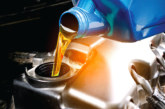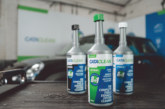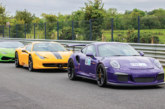 Hybrid vehicle technology has come a long way in the last decade. Up until 2015/2016, the IMI qualification associated with the service and repair of these vehicles has remained the same. However, this year will render it officially obsolete and see the introduction of its replacement. Having played a fundamental part in its creation, Steve Carter, MD at train4auto Consultancy, is in an ideal position to outline the new qualification.
Hybrid vehicle technology has come a long way in the last decade. Up until 2015/2016, the IMI qualification associated with the service and repair of these vehicles has remained the same. However, this year will render it officially obsolete and see the introduction of its replacement. Having played a fundamental part in its creation, Steve Carter, MD at train4auto Consultancy, is in an ideal position to outline the new qualification.
I have been involved in hybrid training for the last 10 years. At the beginning, the number of cars classified as hybrid was in the minority, however it was clearly an interesting subject in an ever-evolving industry. Nowadays, many vehicle manufacturers offer a wide range of plug-in or pure electric vehicles, reflecting the advances in automotive technology. Let’s take the 2005 Toyota Prius as an example. This vehicle had a 1.2kWh battery, but due to the NiMH chemistry, only 30% of the battery capacity could be utilised to maintain its longevity. In addition, the maximum power output was poor at just 18kW, meaning the Prius could only travel a distance of one mile at speeds under 30mph when in EV mode. At the time, Prius owners accepted this shortcoming as there was no alternative (as a previous Prius owner, I speak from experience) – however, this is no longer the case.
I now own a Mitsubishi Outlander PHEV; a two-tonne 4×4 vehicle that contains a Li-ion battery with a capacity of 12.1kWh (roughly 12x the energy density of the Prius battery). Due to improvements in battery technology/chemistry, it is possible to use 80% of the battery capacity with no adverse consequences. The battery of this vehicle offers better power output at 80kW, meaning the vehicle is capable of travelling at 70mph on electric mode only.
The thermal energy produced from batteries within hybrid and EV vehicles requires careful management. The Prius works by recirculating cabin air, whereas the Outlander will use its own air conditioning evaporator within the battery pack. Other manufacturers, such as Renault and Nissan, will use the air conditioning system to heat the cabin instead of relying on a coolant system.
In 2015/16, when I became a PHEV owner, it became apparent that the previous IMI hybrid qualifaction that I was teaching was now obsolete, due to significant advances within hybrid and EV technology and design. I shared my views with the IMI. As a result, I was asked to participate in the IMI steering group committee for the new EV qualification which incorporates training for all hybrid, PHEV, electric and alternative fuel vehicles. This new EV qualification will replace the current training and qualifications offered, which will become obsolete from June 2018.
At the steering group committee meetings, where most of the vehicle manufacturers were present, in addition to a representative from the Health and Safety Executive (HSE) and many of the vehice recovery services, I was the only representative from the independent aftermarket. From the outset, the HSE made it very clear that they wanted this qualification to cover every level of involvement within the automotive supply chain. The HSE expressed its concerns about the apparent lack of knowledge within the industry regarding EV technology, coupled with the predicted length of time before manufacturers have an entire range of electric vehicles.
With this in mind, the new qualification is broken down into four sections to address these concerns. This article will be looking at the first two qualifications, as they are particularly relevant to motor factors. The second two qualifications are pertinent for technicians.
The Level 1 qualification is a half-day awareness course which is suitable for those involved in car and part sales, car event staff, valeters and company car users. The HSE highlighted concerns about the handling, transportation and storing of components associated with electric and plug-in vehicles and the risk posed to those working and operating them, as this can be dangerous. This is particularly important for individuals with pacemakers or insulin pumps who are at risk of having their medical devices disrupted from the magnetic fields generated during rapid charging.
The Level 2.1 qualification is for recovery personnel. It aims to provide them with the necessary skills to safely approach and recover an EV or PHEV vehicle, including information regardingthe location of the high voltage safetyplug (if fitted), how to check that the high voltage system has shut down and what to do in the event of a battery pack entering ‘thermal runaway’. The qualification will also cover how to identify the location and rootings of high voltage cables and the safe recovery of EV/ PHEV vehicles to avoid damage to the electric motors during towing.
This qualification could become compulsory for a vehicle recovery business after it was highlighted that more damage can be caused to the vehicle from incorrect recovery than from the initial accident, leaving companies open to additional compensation costs.








